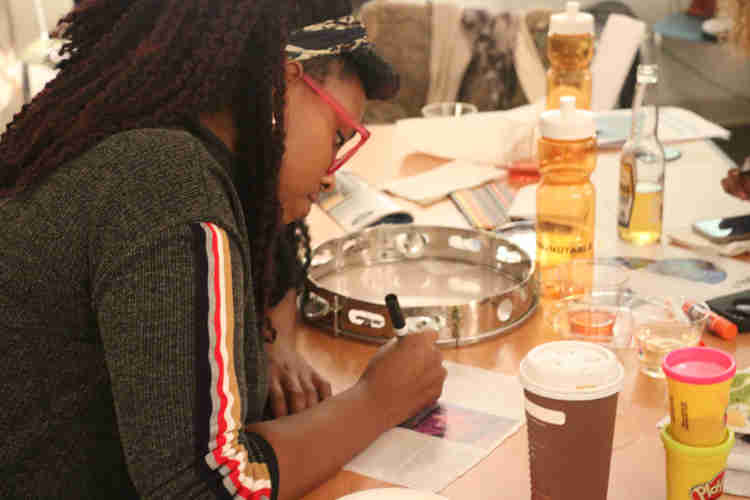In the fall of 2018, the TAP trainees began writing our Teaching Artist philosophies. Writing my teaching philosophy was perhaps one of the most difficult things I had to write. However, the process of creating it helped me regain my vision and focus as a teaching artist. The process also allowed me to face my own fears and worries about artistry and teaching practice. I made the decision to be a teaching artist years ago, but I lost sight of why and how I am teaching.


A Teaching Artist philosophy, as defined by our TAP facilitators, is a “conception of how you understand teaching and learning.” It addresses the “what, why, and how” of one teaches. Our first draft was due in December and a polished draft due in February. The process was brilliantly scaffolded throughout the Saturday workshops.
The process began with discussing and reflecting on learning. What is it and what does it look like? Our facilitators led us through our examination of how we ourselves learn. Then by discussing multiple intelligences, we reflected on how many types of learners might be in our classrooms. We also reflected on the kinds of environments that allow us to thrive as a learner.


The examination was eye-opening because I realized that a “teacher-centered” environment was how I usually imagined an ideal classroom. A quiet space with heads down and working diligently on a task. In retrospect, the best learning environments I’ve experienced were student-centered and loud. From the outside, one may have thought the classroom or workshop was chaotic. I, however, remember those classrooms full of lessons and challenges that facilitated my growth as an artist and an individual.
Finding my “what” was daunting as theatre artists are trained to wear many hats. Thinking of what I absolutely loved—playwriting, movement and improvisation—helped me narrow down. The “how I teach” was perhaps the most challenging. I still feel that I am in the beginning of my teaching artist career. Before, I was not very focused on how I was teaching. During one of the Saturday workshops, we reflected on the impactful educators in our histories. The educators I had in the past made learning fun. It was student-centered and allowed for independent exploration and reflection. There was encouragement and healing. I also remembered that they greeted me, showed respect, and made space and time. Whenever I hit a wall with my Teaching Artist philosophy, I thought back to the reflections about educators in my life. From there, I was able to imagine how I would implement their style of teaching into my own practice.
Imposter syndrome was another obstacle that arose while writing. It was the first time articulating why I wanted to teach theatre and storytelling. Who am I to teach theatre when I haven’t had a professional role? I had to face my insecurities of about my art and skills as a Teaching Artist.
Although difficult, it was a fun process. I loved imagining what kind of learning environment that I wanted to facilitate.
Most importantly, I learned that my Teaching Artist philosophy is not set in stone. It is a document that will change as career continues. I am grateful for the process as I feel that my vision and focus for my teaching practice became clearer.



